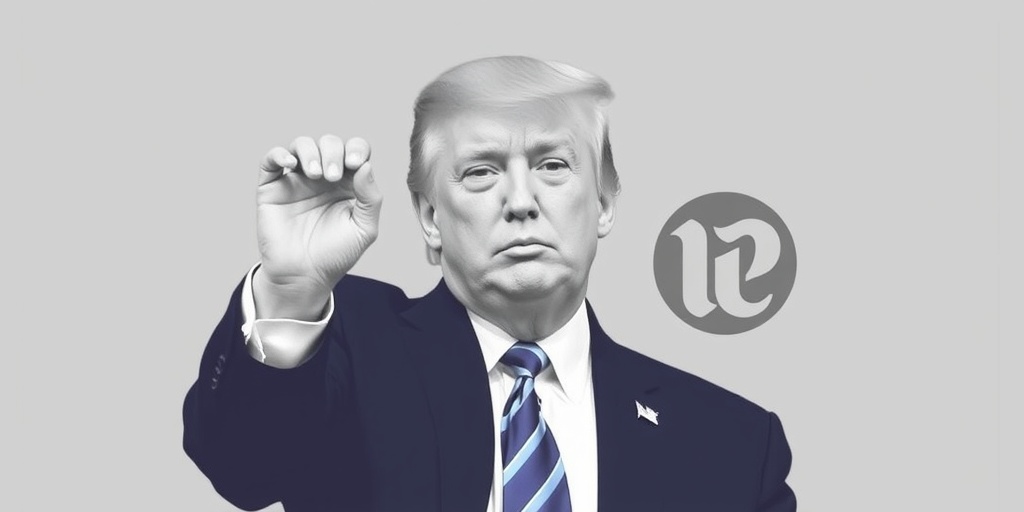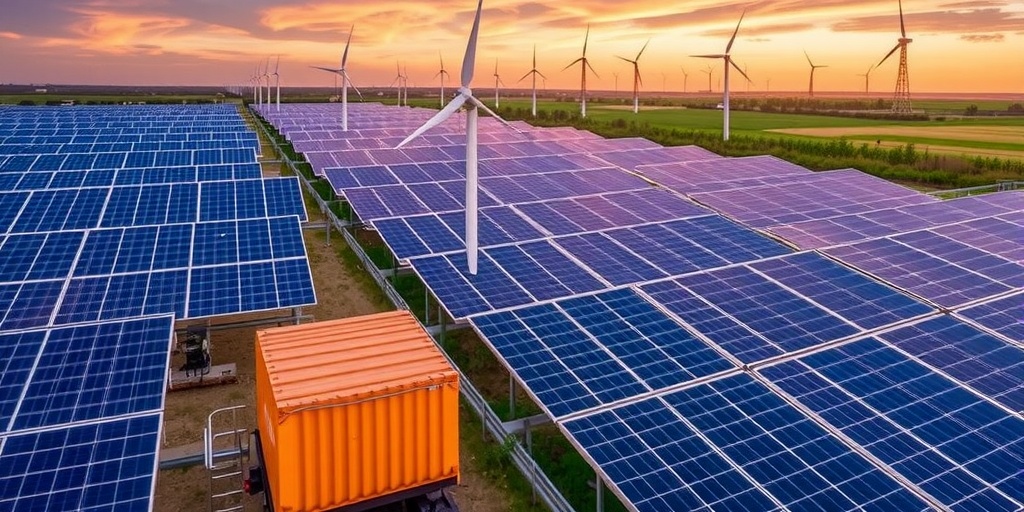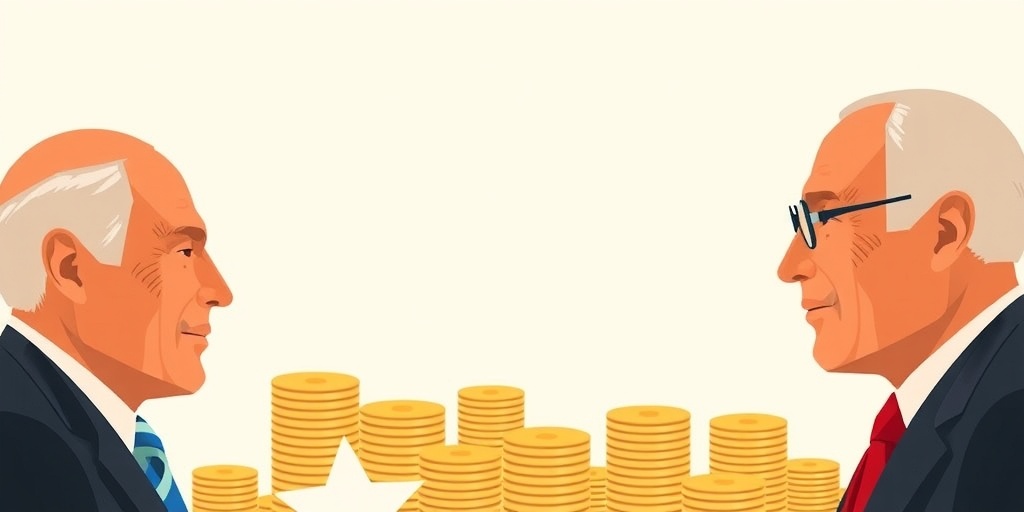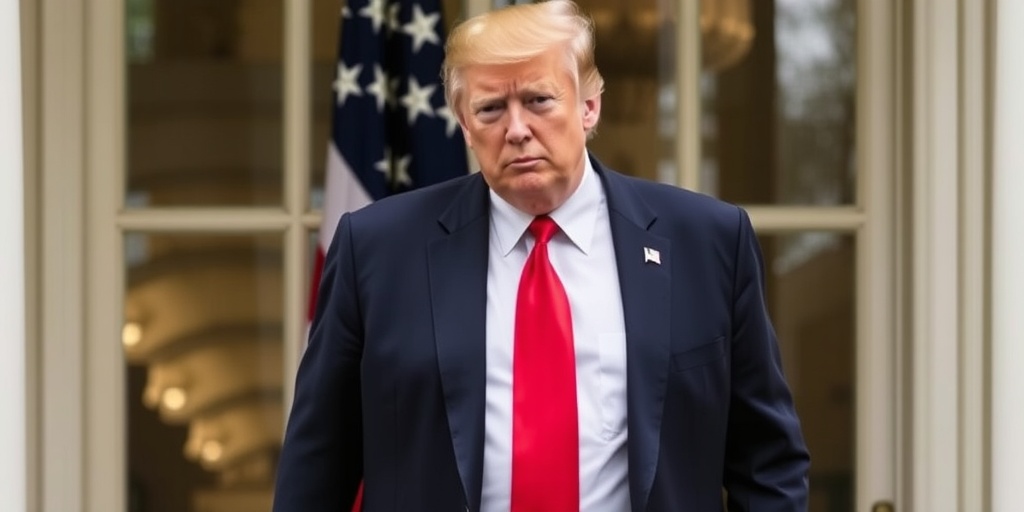Now Reading: Trump’s Economic Experiment for the U.S.
-
01
Trump’s Economic Experiment for the U.S.
Trump’s Economic Experiment for the U.S.
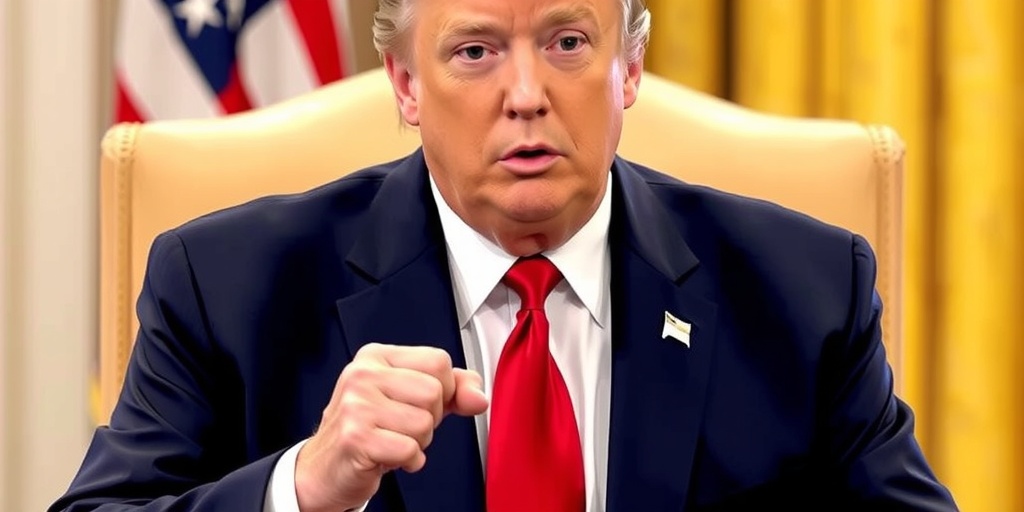
Trump’s Economic Agenda: A Bold Experiment Amid Inflation and National Debt
President Donald Trump is preparing to implement an unprecedented economic strategy as he resumes his presidency, embarking on a bold agenda characterized by significant tax cuts and increased tariffs. This move comes during a period of high interest rates and elevated consumer prices, presenting a stark contrast to the economic conditions he faced at the beginning of his first term eight years ago.
Upon taking office on Monday afternoon, Trump expressed his intention to swiftly enact universal tariffs, cut back on regulations to boost domestic energy production, and advocate for new rounds of tax reductions through Congress. Administration officials indicated that a flurry of executive orders would be signed on the same day, aiming to reinstate oil and gas drilling in Alaska, eliminate Biden-era policies promoting electric vehicle adoption, and adopt a comprehensive approach to tackling inflation.
The current economic climate starkly differs from the one Trump inherited in his first term, which was marked by low inflation and a sustained economic expansion following the recession. As Trump steps back into leadership, he confronts a United States economy that many analysts predict will slow down in the upcoming years. While inflation rates have moderated, consumer prices remain over 20 percent higher than when Trump last left office. The national debt has surpassed a staggering $36 trillion, and a contentious debate over increasing the nation’s borrowing capacity looms on the political horizon.
Despite facing skepticism from many economists regarding his proposed policies, Trump’s advisors remain optimistic about their potential impact. Economists like Paul Ashworth, the chief U.S. economist at Capital Economics, have voiced concerns that Trump’s strategy could lead to stagflation, a stagnation of growth coupled with inflation. Ashworth projects that the proposed tariffs might reverse the small gains in price stability and instead push inflation back up to around 3 percent, while also anticipating a slowdown in economic growth from 2.5 percent to approximately 1.5 percent.
Recent data from the Labor Department revealed that the Consumer Price Index saw a 0.4 percent rise from November, marking a year-over-year increase of 2.9 percent—this increase is indicative of the work still required by the Federal Reserve. Some officials at the Fed have expressed worries that Trump’s policies could exacerbate inflationary pressures.
Trump’s advisors, however, are undaunted by the opposition to his plan. They firmly believe that reducing regulations and implementing tax cuts will rejuvenate economic output and ultimately bring down federal deficits. Scott Bessent, Trump’s selected Treasury secretary, commented on the matter, suggesting that an upward shift in the growth trajectory would fundamentally alter the economic landscape of the nation.
A critical wildcard in Trump’s economic strategy is the extensive tariffs he intends to impose and how other global economies will respond. The new administration advocates for blanket tariffs of 10 percent on imports, with even steeper tariffs planned on goods from specific countries. Although there is a possibility that these tariffs could be gradually implemented with some exemptions, the uncertainty surrounding retaliatory measures from other nations complicates the outlook.
Bessent and Stephen Miran, chosen to lead the Council of Economic Advisers, argue that broad-based tariffs should not drive inflation, claiming that such tariffs often lead to an appreciation of the dollar. This would effectively counterbalance the duties by making imports cheaper.
Nevertheless, many economists argue that tariffs ultimately represent a form of taxation that is passed onto consumers. During the trade conflicts of Trump’s first term, many of the tariff-related consequences were felt when other nations responded with their own trade barriers, consequently driving up the costs of American goods overseas.
Ernie Tedeschi, a former chief economist in President Biden’s Council of Economic Advisers, recently pointed out that the expectation to avoid retaliation is an unrealistic assumption underlying Bessent’s argument. Despite a groundswell of support among Republican lawmakers for Trump’s economic initiatives, some have expressed reservations about the potential consequences of imposing new import taxes.
Senator Ron Johnson, a Republican from Wisconsin, articulated his concerns during the Unleash Prosperity event, stating, “Tariffs are certainly a double-edged sword.” Despite Trump’s previous assurances during his campaign that inflation would “vanish completely" should he reclaim the presidency, he has adjusted his rhetoric since taking office, recently admitting in an interview that reducing grocery prices is a formidable challenge. Instead, Vice President JD Vance noted the administration’s objective is to “stabilize” prices going forward.
As President Trump sets his economic policies into motion, the nation waits to see how these turbulent strategies intersect with existing economic realities, potentially reshaping the American financial landscape in unexpected ways.
Stay Informed With the Latest & Most Important News
Previous Post
Next Post
Previous Post
Next Post
-
 01New technology breakthrough has everyone talking right now
01New technology breakthrough has everyone talking right now -
 02Unbelievable life hack everyone needs to try today
02Unbelievable life hack everyone needs to try today -
 03Fascinating discovery found buried deep beneath the ocean
03Fascinating discovery found buried deep beneath the ocean -
 04Man invents genius device that solves everyday problems
04Man invents genius device that solves everyday problems -
 05Shocking discovery that changes what we know forever
05Shocking discovery that changes what we know forever -
 06Internet goes wild over celebrity’s unexpected fashion choice
06Internet goes wild over celebrity’s unexpected fashion choice -
 07Rare animal sighting stuns scientists and wildlife lovers
07Rare animal sighting stuns scientists and wildlife lovers













